HOW ART DECO CAME TO PARK SLOPE (1931)
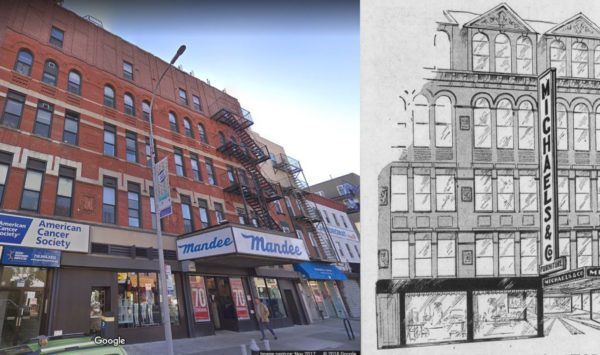
******************************************************************************************************************************* Brownstone Detectives investigates the history of our clients’ homes. The story you are about to read was composed from research conducted in the course of one of those investigations. Do you know the history of YOUR house? ******************************************************************************************************************************* Up until the 1930s, everything in Park Slope was Victorian brownstone. But then came Michael’s and the revelation of a stunning Art Deco facelift. ART DECO IN THE HOUSE For those of you familiar with 5th Avenue in Brooklyn, you may be acquainted with the 5-story building with storefronts known as Nos. 503-505. Currently housing Urban Market of Park Slope, the entire floor was at one time taken over with bedroom sets, kitchen tables, and dinettes – a furniture store known as Michael’s & Co. Originally, the building – sitting between 12th and 13th streets – had quite a different look – a product of the Queen Anne/Romanesque architectural period in the late 1800s, its top floor was lined with faux gables and a mansard roof. By the 1930s, a vertical sign and a marquee had been added to the facade, both with the Michael’s name. Today, of course, Michael’s is no more and all of the Victorian architectural features toward the top of the building (as well as the Michael’s signs) have been removed – probably as much out of an extreme aversion to the cost of maintaining such a facade as due to some of extreme economic periods the building’s passed through. Nonetheless, its current facade is rather unremarkable, […]
A BLACK PORTER ON WHITE 12TH ST (1901)
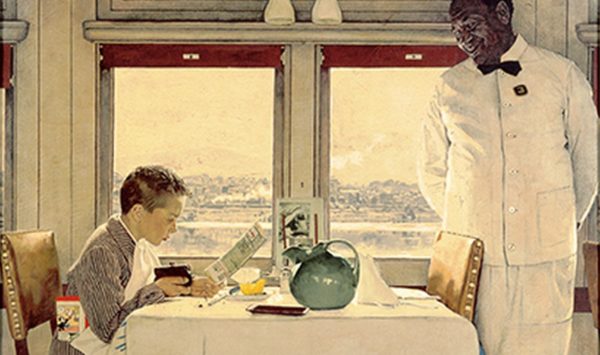
******************************************************************************************************************************** Brownstone Detectives investigates the history of our clients’ homes. The story you are about to read was composed from research conducted in the course of one of those investigations. Do you know the history of YOUR house? ******************************************************************************************************************************** Back in Victorian Brooklyn, segregated neighborhoods were the norm. The only blacks that most whites expected to see on their streets were those who worked there as maids or who participated in other working class trades. Blacks – commonly referred to then as “coloreds” or “Negroes” – rarely lived cheek-and-jowl with whites. On the rare occasion that a black family moved into a white neighborhood, an enormous amount of pressure was usually placed upon the family to move out immediately. It was for this reason that most neighborhoods remained segregated by the turn of the century. One such “Negro” family moved into the Gowanus section of Brooklyn in 1901, at No. 198 Twelfth Street, between Third and Fourth Avenues. It was not long before the family’s new white neighbors started to show their own colors as they began – very publicly in the newspapers – to register their extreme displeasure and disgust at the “intruders” on their block. This was a very highly charged story, to be sure, but was it factual? Or, was it generated to sell a house? The Brownstone Detectives investigated… WHOLE BLOCK EXCITED OVER ADVENT OF NEGROES… This story took place in the summer of 1901. Reported by the Brooklyn Daily Eagle, it seemed a sensationalist piece, […]
A REALTOR ON THE PARK SLOPE (1885)
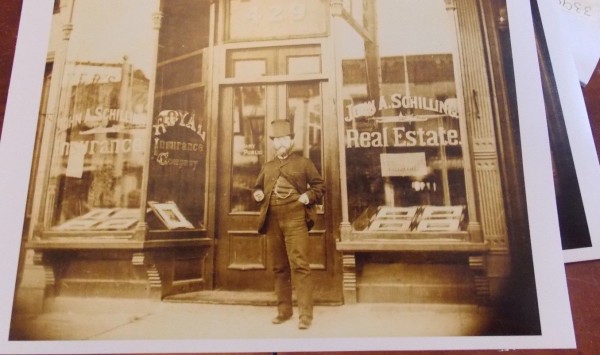
******************************************************************************************************************************** Brownstone Detectives investigates the history of our clients’ homes. The story you are about to read was composed from research conducted in the course of one of those investigations. Do you know the history of YOUR house? ******************************************************************************************************************************** In 1885, Park Slope was still expanding at a rapid clip; houses were being built and sold to those members of a future Brooklyn elite who were then moving from Manhattan across a recently completed Brooklyn Bridge. Enter John A. Schilling of 429 5th Avenue (btwn 8th and 9th streets), who cared for all of Prospect Park Slope’s realty and insurance needs. Schilling appears to have been at the Fifth Avenue location from 1882 through at least 1894, at which time, probably due to the Panic of 1893, the real estate market dried up. These bad economic times, which lasted most of the decade, would force him to go out of business and sell his office – after which he would seek other employment. With his Republican political connections, and the fact that another German, Republican Charles A. Schieren, had just been elected mayor of Brooklyn, that work came in civil service positions which had him working for various Brooklyn city agencies. Schilling was also a Civil War veteran, which was common for men his age living in Park Slope during the period. When Schilling passed in 1910 on Montague Terrace in Brooklyn Heights, he was memorialized in the press as “very popular among his associates.” Follow @BrownstoneDetec Share ———————————————————————————————————————– The […]
PARDONED THAT HE MAY HANG (1905)
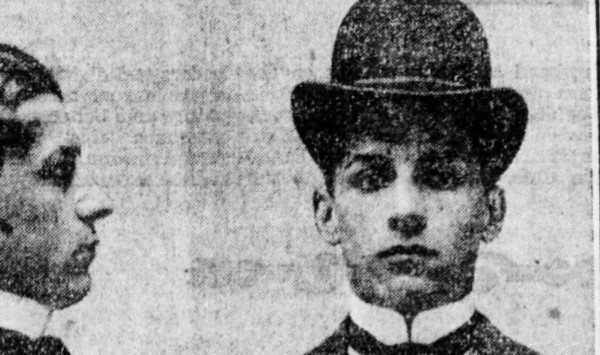
******************************************************************************************************************************** Brownstone Detectives investigates the history of our clients’ homes. The story you are about to read was composed from research conducted in the course of one of those investigations. Do you know the history of YOUR house? ******************************************************************************************************************************** He was a “desperate young crook,” according to the Governor of New York. But the governor went ahead and pardoned him anyway. Charles Bassett, 19, of Brooklyn, had committed enough crimes that the State decided that he needed to be put away for eight years in Sing Sing. Amongst other felonies, he “broke into Nicholas Weinberg’s jewelry store on Fifth Avenue” and “assaulted Jeweler Bridger and stole his diamond on Fulton Street.” And these were the crimes that they knew about. Bassett was a bad apple – plain and simple. But Governor Higgins in an agreement with Connecticut’s governor, made a deal that scared and surprised everyone. And in the process, he practically opened Bassett’s cell door himself, escorted him through the yard, and watched as he walked out the prison gates. ROBBING PETER TO PAY PAUL These listed crimes, however, were but mere child’s play when his solitary darker and fouler crime was taken into account. As all good thieves do, Bassett had a criminal network to which he belonged. As soon as there was a chance to make a quick buck without having to do work of any kind, Bassett could smell the opportunity. In Bridgeport, Connecticut, a $20,000 haul was the glimmering bauble that lured Bassett’s attention. It […]
BROOKLYN’S “GREAT WHITE HURRICANE” (1888)
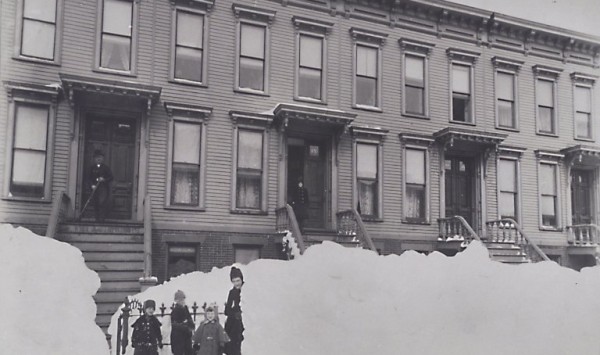
“Brooklyn awoke this morning to find itself in the hands of the blizzard.” So read the morning edition of the Brooklyn Daily Eagle almost 130 years ago on Monday, 12 March 1888, about the record snowstorm that, over a day-and-a-half period, dropped up to three feet of snow on the city, produced sustained winds of 40 miles per hours, and created snowdrifts in some places in excess of 50 feet! Nearly all transportation was shut down completely and many Brooklynites were confined to their homes for up to a week. While the city slept the rain that had rendered last evening slightly unpleasant had turned to snow, the wind had increased to a tempest and all life was driven from the streets. Street cars were unable to proceed. The horses were detached and taken to the nearest place of shelter. The inmates of the cars saw the huge drifts of snow pile up above the window ledges, heard the shrieks of the wires above their heads and did not leave the cars unless an open house was very near at hand. It was about 1 o’clock when the storm became furious and it raged for ten hours with undiminished violence. Those who ventured out during the morning were treated to a view of the city unparalleled in its history. During the entire morning there was little concerted effort, except along the principle business part of Fulton Street, to open traffic or carry on any business. Half the city felt that […]